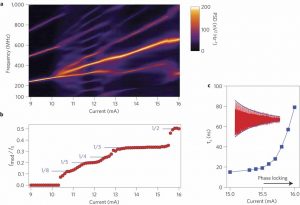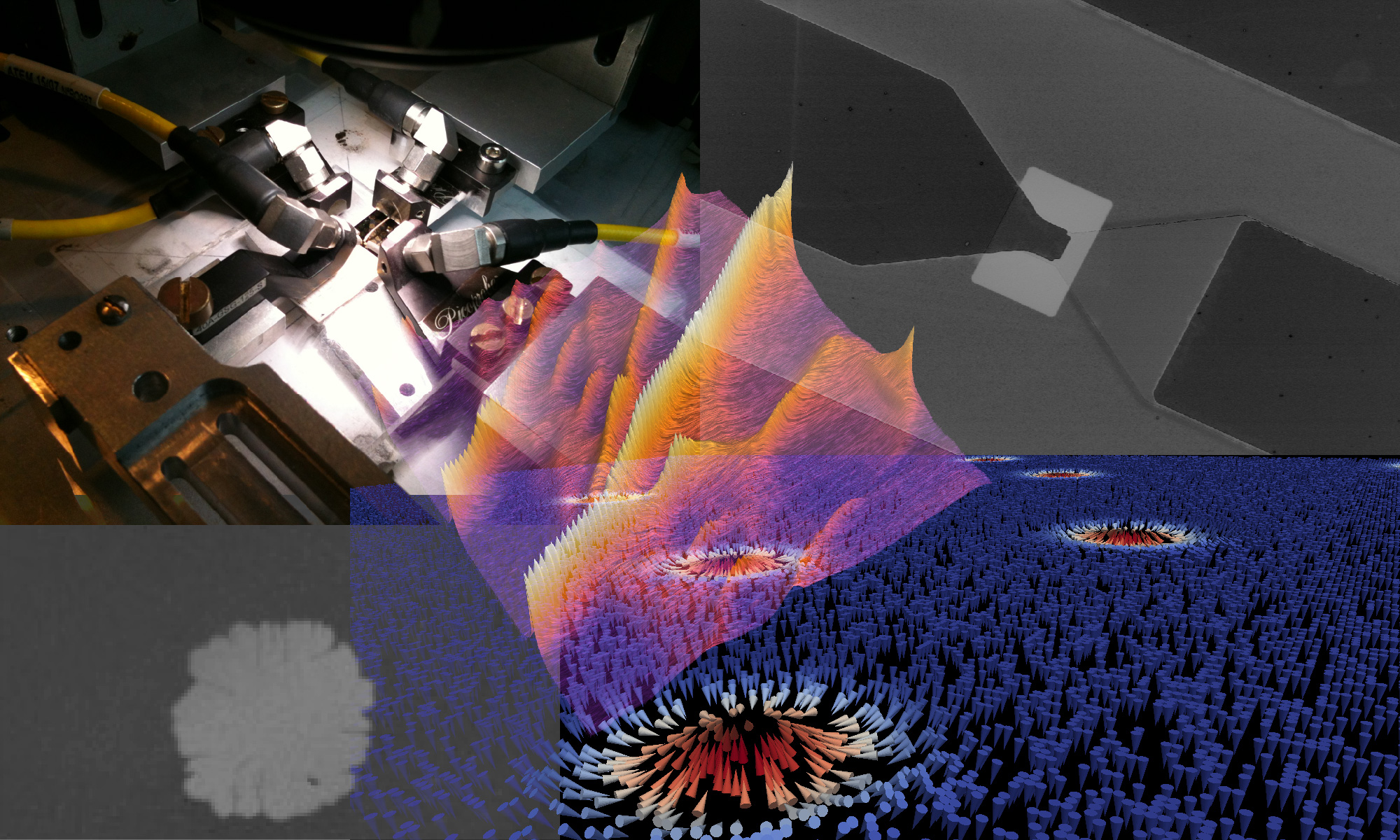Vortices are spiralling spin configurations that cumulate in a compact core region 10-20 nm in size. They are natural ground states in confined geometries such as micron-sized thin film discs and their dynamics are inherently gyrotropic, with typical gyration frequencies in the sub-GHz range. Vortex dynamics has been studied for its fundamental interest and for applications in radiofrequency resonators and oscillators, and field sensing.
In 2008, the NOMADE group discovered a new form of vortex gyration that can take place in a continuous film, rather than in confined geometries such as discs. Such dynamics involve magnetic nanocontacts, where large electrical currents are applied to a magnetoresistive stack through a metallic point-contact, 20-200 nm in size. Recently, the group has brought to light a number of new physical phenomena involving vortices in magnetic nanocontacts. We showed that vortex core can switch its polarity periodically, which, when combined with the natural gyration, can lead to a large number of commensurate and chaotic phases. We have also shown that vortices can be transported ballistically over distances of several hundred nanometres between several nanocontacts by modulating the attractive potential of each nanocontact. These results highlight the possibility of using nanocontact vortex oscillators for chaos-based applications and magnetic logic.

Further reading:
- Q. Mistral, M. Van Kampen, G. Hrkac, J.-V. Kim, T. Devolder, P. Crozat, C. Chappert, L. Lagae, and T. Schrefl, Phys. Rev. Lett. 100, 257201 (2008).
- S. Petit-Watelot, J.-V. Kim, A. Ruotolo, R. M. Otxoa, K. Bouzehouane, J. Grollier, A. Vansteenkiste, B. Van de Wiele, V. Cros, and T. Devolder, Nat. Phys. 8, 682 (2012).
- S. Petit-Watelot, R. Otxoa, M. Manfrini, W. Van Roy, L. Lagae, J.-V. Kim, and T. Devolder, Phys. Rev. Lett. 109, 267205 (2012).
- M. Manfrini, J.-V. Kim, S. Petit-Watelot, W. Van Roy, L. Lagae, C. Chappert, and T. Devolder, Nat. Nanotechnol. 9, 121 (2014).
- R. Soucaille, J.-V. Kim, T. Devolder, S. Petit-Watelot, M. Manfrini, W. Van Roy, and L. Lagae, J. Phys. D: Appl. Phys. 50, 085002 (2017).
